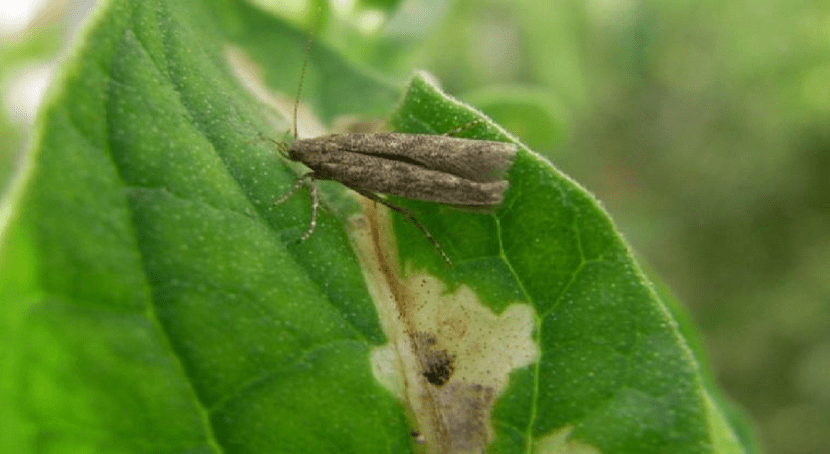
As we have mentioned on other occasions, the tomato is one of the crops prone to suffering from pest attacks or suffer from disease if conditions are not ideal. Weed growth, excess humidity, appearance of a plague, etc. They are the factors that intervene in tomato growth. Today we are going to talk about tomato tuta. It is known as the tomato moth and it is about 7mm long moths that begin to make their own from 7 in the afternoon, damaging the tomatoes.
In this article you will be able to learn the characteristics of this pest, the symptoms that the tomato presents when it is affected and what treatment you can use. If you need to know more about this plague, this is your post 🙂
Key features
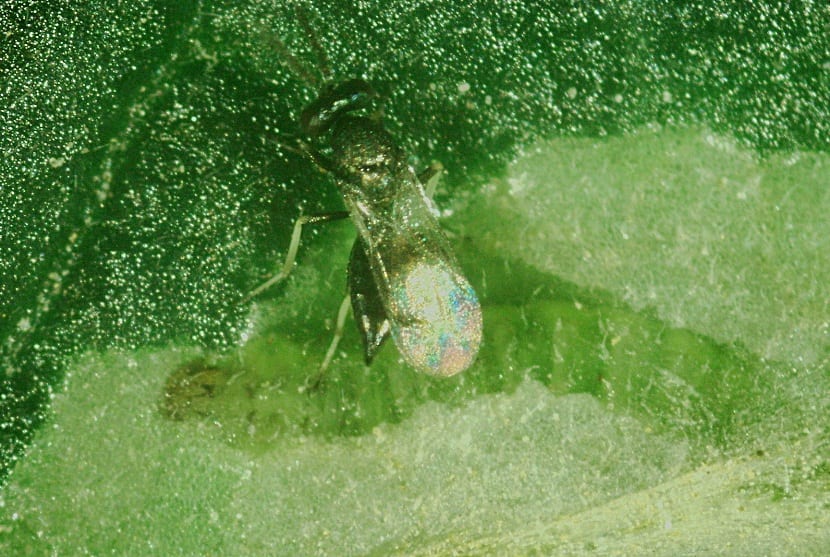
The tomato moth or tuta is a species with a high reproduction rate. Therefore, when it attacks crops, it begins to spread very easily. To avoid very large damage to crops, it is better to act as soon as possible. And it is that the females of these moths are capable of laying more than 240 eggs with ease. The success of the eggs it is almost 100%, so it is capable of having between 10 and 12 generations per year.
The life expectancy of the males is about 27 days while that of the female 24. However, as they have such a high reproduction rate, they seriously affect tomatoes. To identify that a tomato is affected by tuta you must look at the symptoms. They generally lay their eggs on the underside of the youngest leaves. You can find them in the stems and veins of the leaves.
It is possible that, if the tomato is still green, you can recognize them with the naked eye, since they have a creamy white and even yellow color. They are usually deposited individually and it is rare to find them grouped. If tuta attacks tomatoes severely, it also leaves them open to potential diseases. Among the best known is mildew.
Life cycle and damage
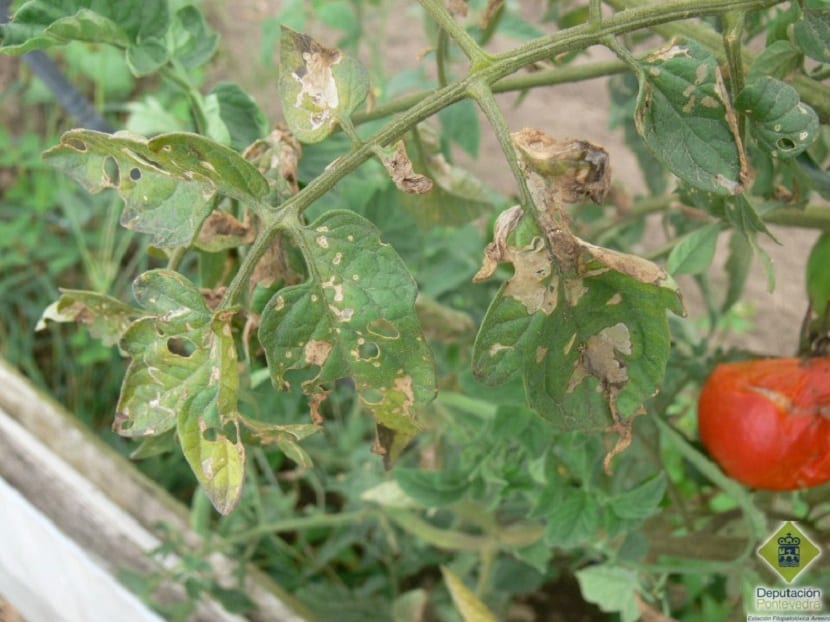
Once the eggs hatch and the larvae hatch, these are the real causes of the danger. When they are only eggs, it is possible to avoid catastrophe in time. Once they are larvae, they begin to eat the stems, leaves and fruits to feed and grow. To identify the larvae you just have to look at the color. When they are newborn, the cocoon has a green color and, as they grow and develop, they darken and adopt a dark brown color.
If you look at the stems and leaves and see that the buds are brown in color, you can be sure that they are about to emerge as adults. In this case you can find them both on the ground and on the plant. If they are in the plant, They will be placed on the underside of the leaf or even on the calyx of the fruit.
As for the damage they can produce, they are quite a lot. As we have mentioned before, they can attack both the leaves and the flowers and the fruit itself. Whatever it is, they will eat it to feed and develop. When they are larvae, they make galleries inside the tomato and when it comes to harvesting the crop, you may find yourself in for a surprise.
These larvae not only affect tomatoes, but can also attack other crops such as potatoes, aubergines, cucumbers, peppers and even tobacco.
How to control tomato tuta
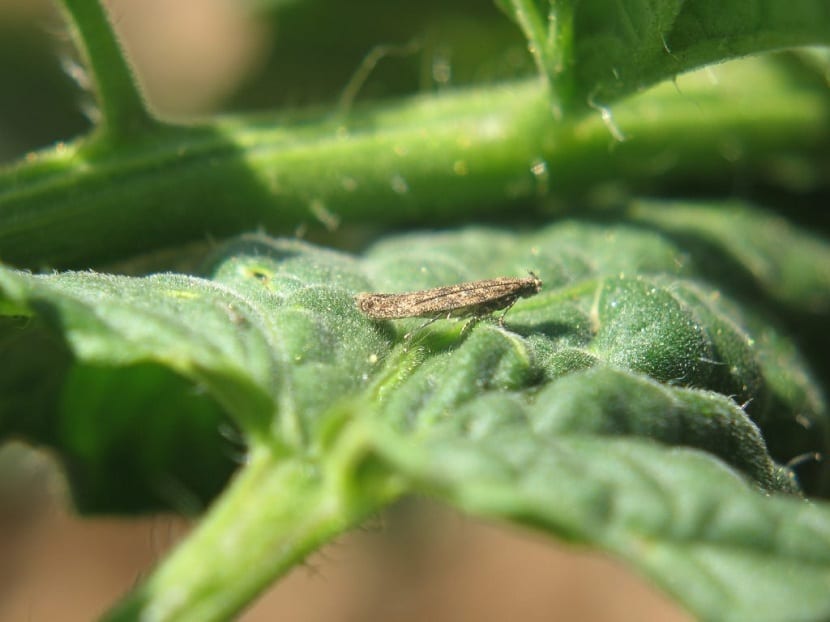
When there is no turning back and our crops are infected by this pest, we have to act to eliminate them as soon as possible. There are some measures that can be carried out in an ecological way and that are used as experience in the management of tomato cultivation. The most experienced in this subject will know perfectly how to act to save their harvest. You also have to know well when and how to water tomatoes to avoid excess humidity.
The first action you must take It is the elimination of the parts damaged by the tuta. Both leaves, stems and fruits that are damaged, we remove them. In this way we will be preventing this plague from continuing to spread and causing more damage to the rest of the crops. Once we have removed the damaged parts, we must wait about 4 weeks to plant another crop that is not so sensitive to this pest.
For example, as we know that tomatoes and cucumbers are sensitive to tuta, it is better to wait 4 weeks or rotate between less sensitive plantations such as squash. The pumpkin has a very tough skin that the tuta is not able to penetrate.
Biotechnical and biological control
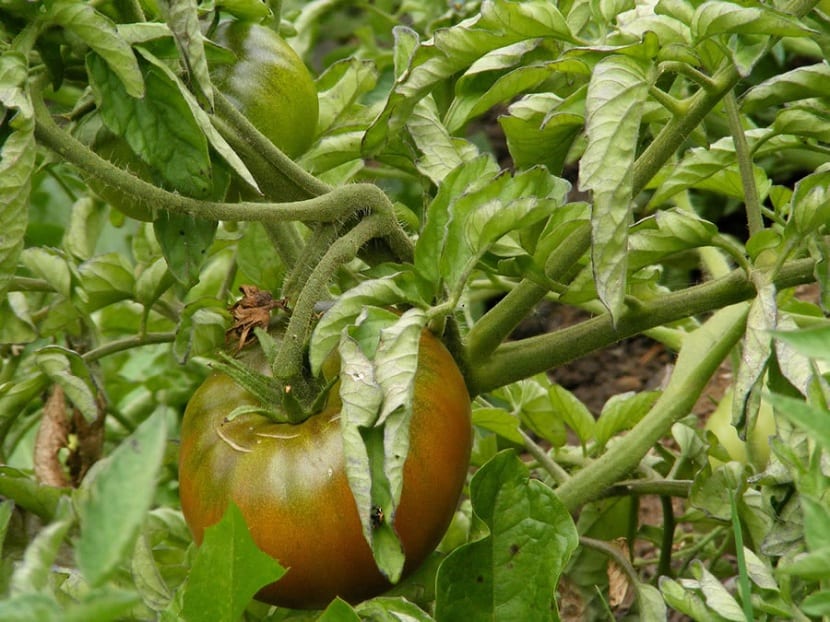
Another option is to use a biotechnical control. This type of control is about acting quickly. From the moment the crops are carried out, we will put massive traps to prevent the tomato tuta from attacking us. We can place two types of traps:
- Water trap. We can place a trap with water to which we add oil and pheromones to attract them. These insects will be attracted to it and will fall into the water drowning. If we place the traps in strategically efficient places, we can prevent them from reaching our tomatoes.
- Delta trap with pheromones. This is another trap in which we will put some sticky substance and put pheromones or oil. It is similar to the previous one. What we will do is disable the movement of these insects and we will have to have a good follow-up to see if the traps take effect.
Finally, a natural biological warfare is as ecological as possible against the tuta attack. The natural enemies of these insects can be used to control populations and their spread. It is necessary that it be applied throughout the crop since from the root they can attack and damage our crops.
To perform this biological control we will use auxiliary insects. They can be both parasites and predators. They have become a good control tool for these moths.
The most effective predatory insects are Macrolophus pygmaeus, Nesidiocoris tenuis, Nabis pseudoferus ibericus and Nabis tenuis. These insects are capable of devouring up to 100 moth eggs a day. It is also necessary not to go overboard with these insects. It is just enough to control tuta populations well.
I hope these tips help you avoid this disastrous plague.